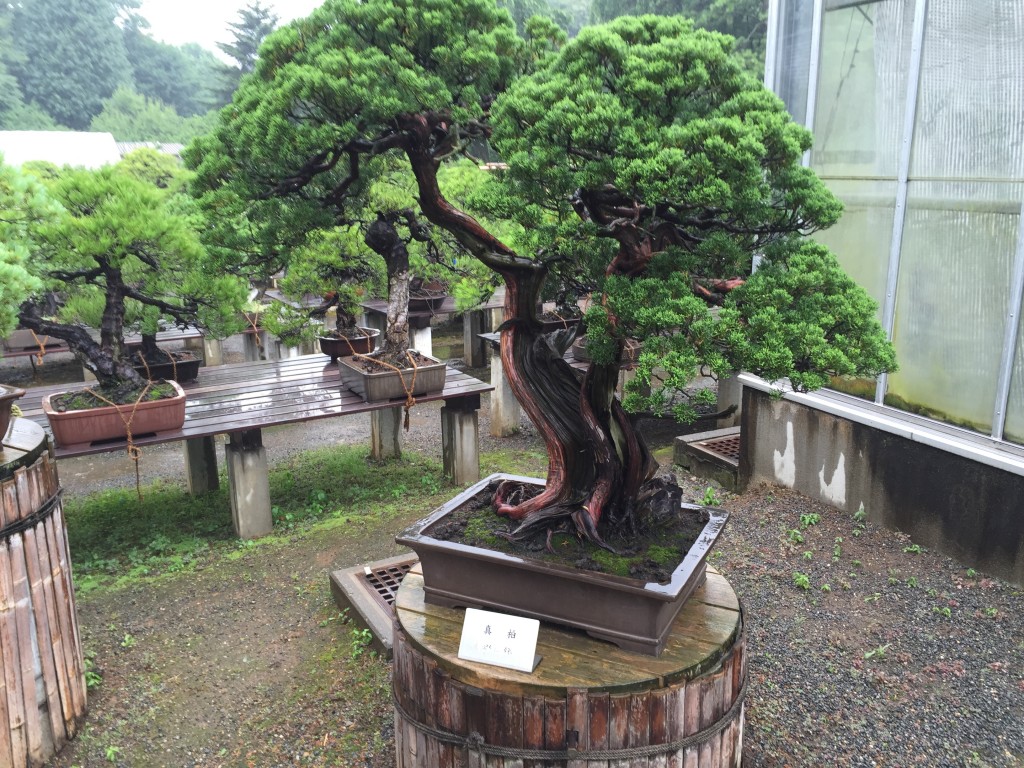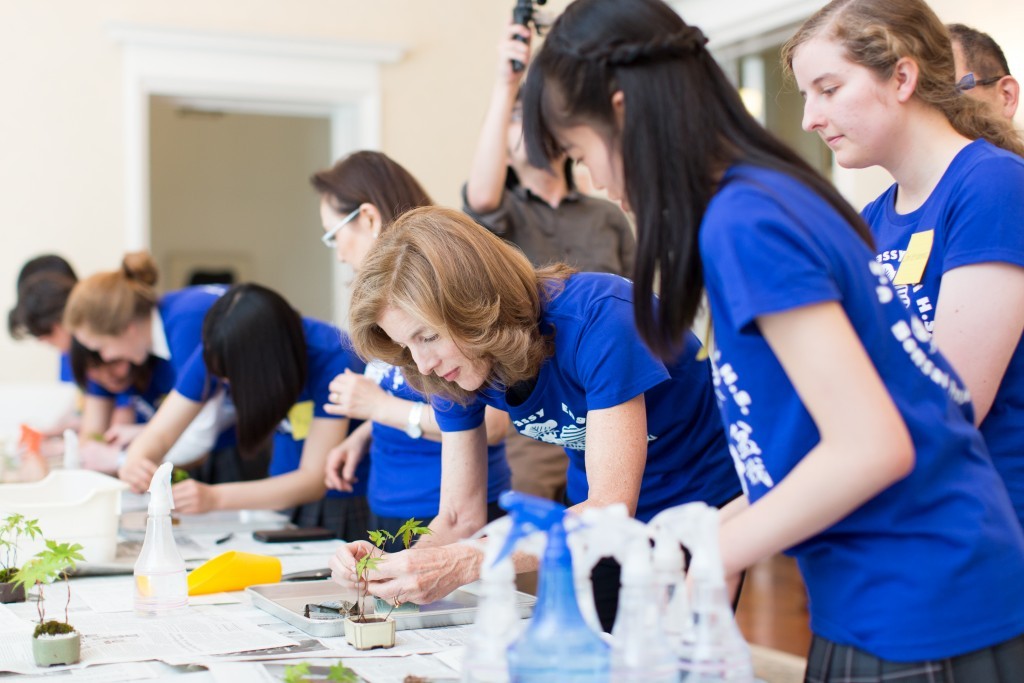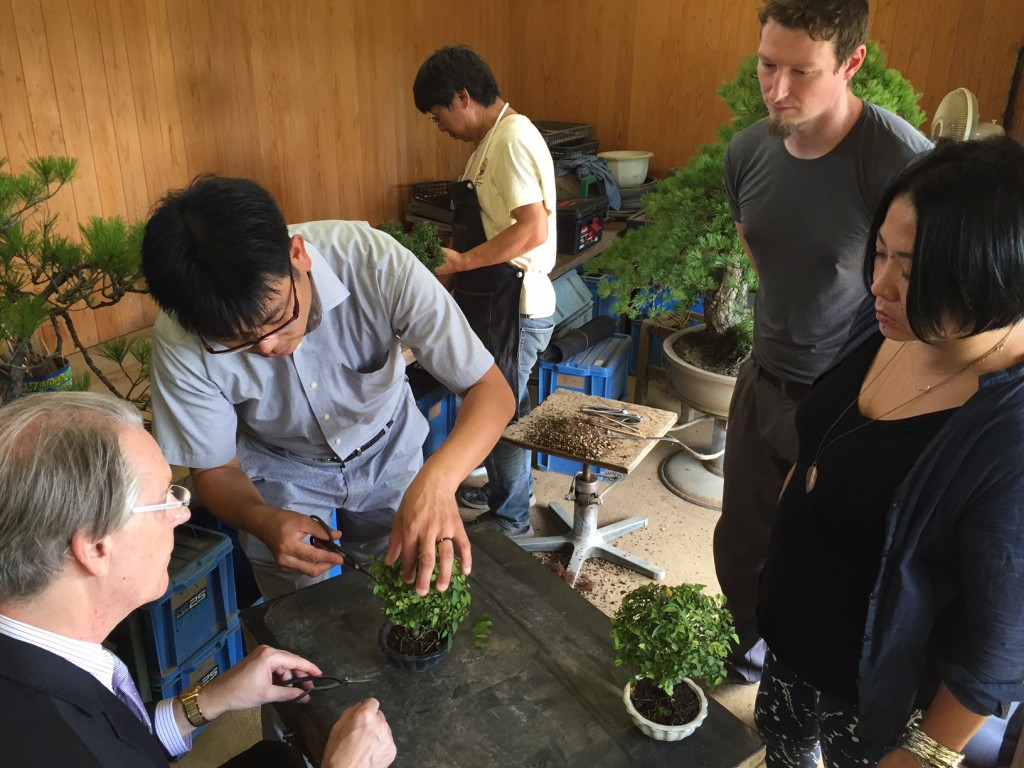I love bonsai. They are such a quintessentially traditional art that was introduced to Japan from China as early as the Kamakura era. As a student of history, I especially love bonsai because they carry stories in their branches and their futures are being calculated and recalculated with the tests of time and external forces.
This fall I went to Saitama to visit the Omiya Bonsai Art Museum and the world-famous Kato bonsai nursery, Mansei-en. I particularly liked the Chinese quince that was once owned by the late Prime Minister Nobusuke Kishi, and which Prime Minister Shinzo Abe would have seen as a boy. I also learned that Omiya became a world center of the bonsai art when a group of artists moved here from Tokyo after the devastating 1923 Great Kanto Earthquake.
At Mansei-en, I saw a 1,400 year-old bonsai plucked from the cliffs of Niigata prefecture and met Adam, who will be the first American to complete an apprenticeship at this prestigious institution. I also got a lesson on bonsai care from Mr. Kato, whose grandfather donated 50 bonsai specimens to the U.S. National Arboretum in Washington, D.C., and now has a road in the arboretum named after his family. This is what U.S.-Japan friendship is all about.
Mr. Kato, whose family's commitment to this art goes back generations, told me about how the spirit of bonsai is to guide the tree in tune with nature, nurture it, and keep it on a long path of healthy life. He explained that bonsai have been given as state gifts by several prime ministers to American presidents. Whenever I look at bonsai like these, I listen for the narratives of the eras in which they were first cultivated, the remote places from which the original trees were selected, and the famous people who had them near as they lived their notable lives.
I’ve been most struck on this journey to Saitama and other bonsai nurseries, as well as through my research, by the enduring and deep bonds between the United States and Japan, even in this most traditional of arts. Kato's family has supported bilateral friendship through his grandfather's generous gift to the United States, by continuing to provide beautiful gifts, and even by mentoring Adam, a young American who is a most enthusiastic student of the art. This was one of the most surprising and meaningful connections I’ve discovered in my travels around Japan.

I saw some of the world's oldest and most exquisite bonsai trees at the Ohmichi Garden at the Imperial Palace.
I hope you will have the chance to admire the bonsai as you walk through the Kato Family Japanese Stroll Garden at our National Arboretum. If the season is right, you can take a longer walk along the National Mall and admire the Japanese cherry trees in bloom as well.

Ambassador Kennedy also learned how to plant a bonsai in a workshop she hosted at her residence with students from the Tokyo Metropolitan Horticultural High School. Look at how much fun everyone is having sharing this art across cultures!








COMMENTS0
LEAVE A COMMENT
TOP